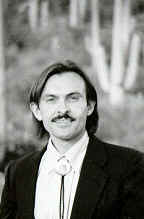I am late on my usual Monday piece for OpEd News because I spent the week teaching Cherokee bodywork at a well known retreat center on the Eastern seaboard. I had many opportunities to hear the word shamanism and to reflect upon its use.
In my workshop, I was quick to tell those assembled that shaman is largely a term of insult in Native North America, used to refer to people who claim to be traditional healers without traditional training. On reservations throughout North America, people spend most of their life learning how to be a traditional healer. They feel a bit miffed about people attending weekend workshops and putting out their shingle as "shamanic practitioners." Probably they feel miffed about anyone who wants to skip the 10,000 hours necessary to become really good at something. Probably they resent the money differentials for these "urban shamans" compared to healers on the reservation.
Having said that, let's unpack the term shamanic practitioner." I would venture to say that Michael Harner and Sandra Ingerham made it popular through their Institute for Shamanic Studies. In this usage, based upon a study of Mongolian shamans or healers, the "shamanic practitioner" journeys for the client to the underworld or the upperworld to retrieve missing parts of the soul or entire souls and to return them to the ordinary or middle world. North American traditions do not have upper, middle, and lower worlds, so one obvious difference emerges. In most of the North American traditions I have studied, the healer (or in some ceremonies, the intercessor, a term which suggests a Roman Caatholic derivation), engages elements of the spirit world and requests their help in healing someone in the ordinary world. Anyone is allowed to do this, just as in Christian churches, anyone is allowed to pray for another's healing. Healers are recognized as having a bit more skill than most or, at least, more powerful spirit helpers, or a better track record at eliciting the help of the spirits. When a person is really sick, they need all the help they can get. More minor sickness can be healed internally within the family through prayers and without the help of an external healer.
The traditional healers of North America clearly work with spirits and request the help of the spirit world. They clearly appear to work with energy, as in energy medicine. Besides physical bodywork with rubbing, shaking, moving, and other types of massage, I have seen traditional healers use their hands above the body and on the body to move energy. I have seen then remove curses and objects placed within the body through curses. I have seen them move stuck energy, through singing, chanting, the waving of feathers, sucking, blowing smoke, smudging with sage, cedar, sweetgrass, and other herbs, and more. I have seen them work with crystals and rocks to augment their efforts. Inevitably they speak of the spirits that assist them in these pursuits. So why don't they want to be called shamans?
One obvious reason comes from the use of terms from other languages to describe what we do for which there is a perfectly good term already existing in our own language. In Lakota, for example, a healer with spirits and energy is called a wicasa wakan, while a healer with plant medicine is called a wicasa pejuta. Why would one of these people want a title from a Mongolian language?
But there is something else harder to pinpoint. There is the sense that these "shamanic practitioners" have not earned the rights. They have not suffered enough. They have lived in relative suburban or urban comfort and have learned to speak a metaphorical language that they may or may not be entitled to speak.




